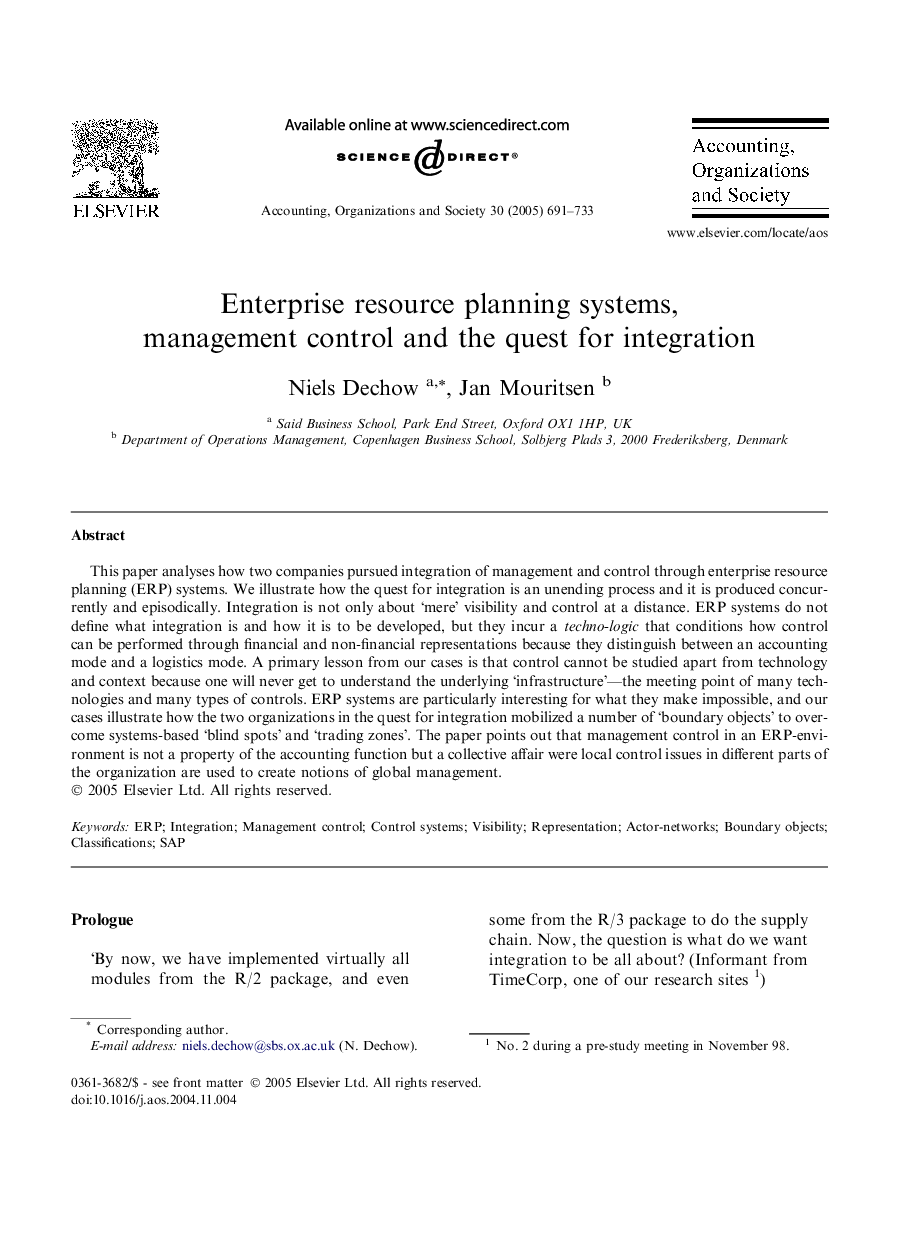| Article ID | Journal | Published Year | Pages | File Type |
|---|---|---|---|---|
| 9718897 | Accounting, Organizations and Society | 2005 | 43 Pages |
Abstract
This paper analyses how two companies pursued integration of management and control through enterprise resource planning (ERP) systems. We illustrate how the quest for integration is an unending process and it is produced concurrently and episodically. Integration is not only about 'mere' visibility and control at a distance. ERP systems do not define what integration is and how it is to be developed, but they incur a techno-logic that conditions how control can be performed through financial and non-financial representations because they distinguish between an accounting mode and a logistics mode. A primary lesson from our cases is that control cannot be studied apart from technology and context because one will never get to understand the underlying 'infrastructure'-the meeting point of many technologies and many types of controls. ERP systems are particularly interesting for what they make impossible, and our cases illustrate how the two organizations in the quest for integration mobilized a number of 'boundary objects' to overcome systems-based 'blind spots' and 'trading zones'. The paper points out that management control in an ERP-environment is not a property of the accounting function but a collective affair were local control issues in different parts of the organization are used to create notions of global management.
Keywords
Related Topics
Social Sciences and Humanities
Business, Management and Accounting
Accounting
Authors
Niels Dechow, Jan Mouritsen,
